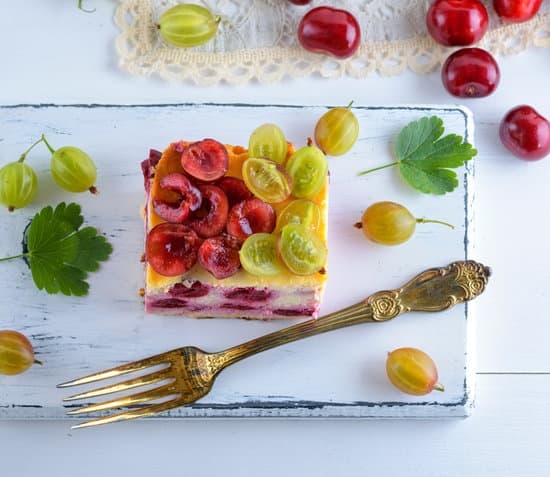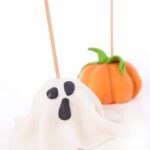Fake cake decorations have become a popular trend in the baking and confectionery industry, as many individuals seek to achieve stunning designs at a fraction of the cost. However, this growing trend brings along with it a variety of risks and implications that consumers must be aware of. From health concerns to legal ramifications, understanding the world of fake cake decorations is essential for both professional bakers and hobbyists alike.
As consumers increasingly turn to fake cake decorations to elevate their culinary creations, the market has seen an influx of counterfeit products that mimic the appearance of authentic decorations. These fake decorations often contain harmful chemicals and materials that can pose serious health risks if consumed.
In addition to health concerns, using fake cake decorations can also lead to legal consequences if not properly disclosed or labeled, further underscoring the importance of being able to distinguish between authentic and counterfeit products.
Spotting fake cake decorations is crucial in ensuring the safety and quality of your baked goods. From examining packaging labels for any suspicious ingredients to checking for certification from reputable sources, there are various ways to identify counterfeit decorations. By staying informed and vigilant, consumers can protect themselves from potential health hazards and legal issues associated with using fake cake decorations.
Risks Associated With Fake Cake Decorations
Fake cake decorations have become increasingly popular in recent years due to their affordability and ease of use. However, along with the convenience they offer, there are also risks associated with using fake cake decorations. It is important for consumers to be aware of these risks in order to make informed decisions when decorating cakes.
One of the main risks of using fake cake decorations is the potential harm they can cause if ingested. Many fake cake decorations are made from materials that are not intended for consumption, such as plastic or other non-edible substances. If these decorations are mistakenly eaten, it can lead to serious health issues such as digestive problems or choking hazards.
To help consumers avoid the risks associated with fake cake decorations, here are some tips on how to spot them:
- Check the label: Look for a label that clearly states whether the decoration is edible or not.
- Examine the texture: Fake cake decorations often have a plastic-like texture, while edible decorations will have a more natural feel.
- Smell test: Edible decorations will typically have a neutral or sweet smell, whereas fake decorations may have a chemical odor.
It is crucial for consumers to prioritize safety when choosing cake decorations. Opting for authentic edible decorations not only ensures a delicious and safe eating experience but also supports the integrity of baking practices. By being vigilant about the ingredients and materials used in cake decorating, individuals can prevent any potential harm that fake cake decorations may pose to their health and well-being.
How to Spot Fake Cake Decorations
Spotting fake cake decorations can be a crucial skill for consumers, as these artificial embellishments can sometimes be challenging to distinguish from the real deal. There are several indicators to look out for when trying to identify fake cake decorations.
One common sign is the appearance of perfect and identical decorations on each cake, as natural variations would typically be present in handcrafted items. Additionally, fake decorations may exhibit an unnaturally vibrant color or shine that surpasses what is achievable with natural ingredients.
Another way to spot fake cake decorations is by considering their texture and feel. Authentic edible decorations are likely to have a certain level of softness or pliability due to their composition, while fake decorations might feel rigid or less malleable. It’s important to pay attention to any unusual smells or tastes coming from the decorations, as artificial materials could emit chemical odors or have an off-putting flavor.
Consumers should also be wary of suspiciously low prices or discounts on cake decorations, as high-quality ingredients and craftsmanship usually come at a cost. When in doubt about the authenticity of cake decorations, it’s always best to ask the baker or supplier about the ingredients and manufacturing process. By being vigilant and informed, individuals can learn how to spot fake cake decorations and ensure they are getting safe and genuine products for their baked goods.
| Indicator | Signs of Fake Cake Decorations |
|---|---|
| Appearance | Perfect and identical decorations, unnatural colors or shines |
| Texture | Rigidity, lack of softness compared to real decoration |
| Smell/Taste | Chemical odors, off-putting flavors in the decoration |
Impact of Fake Cake Decorations on Health
Fake cake decorations have become increasingly popular in the baking industry, with many consumers opting for these artificial embellishments to add flair to their cakes. However, the use of fake cake decorations can have serious implications on one’s health. The convenience and visual appeal of fake decorations may seem tempting, but understanding the impact they can have on your well-being is crucial.
Chemical Content
One major concern when it comes to fake cake decorations is the presence of harmful chemicals. These artificial decorations often contain synthetic dyes, preservatives, and other additives that are not meant for consumption. When these chemicals come into contact with food, especially in such close proximity as on a cake, there is a risk of contamination which can lead to adverse health effects.
Allergies and Sensitivities
Another issue with fake cake decorations is the potential for triggering allergies and sensitivities in individuals. Many of these artificial embellishments contain ingredients that could be allergens or irritants to some people. It is important to be aware of any specific allergies or sensitivities you or your guests may have before using fake cake decorations to avoid any adverse reactions.
Nutritional Value
Fake cake decorations offer little to no nutritional value compared to real edible embellishments like fresh fruits or nuts. By choosing artificial decorations over natural options, you miss out on the vitamins, minerals, and nutrients that real ingredients provide.
This can contribute to an overall lack of nutrition in your diet and impact your health in the long run. It is essential to prioritize the quality and nutritional content of the ingredients you use for decorating cakes to maintain a balanced diet and promote overall well-being.
Legal Implications of Using Fake Cake Decorations
Fake cake decorations have gained popularity in recent years, with many individuals opting for these artificial embellishments to adorn their cakes. However, it is crucial to understand the legal implications that come with using fake cake decorations. While these decorative items may seem harmless and convenient, there are certain risks and regulations that consumers need to be aware of.
To begin with, the use of fake cake decorations could potentially violate food safety regulations set by governing bodies. Some artificial decorations may contain harmful chemicals or ingredients that are not fit for consumption. This poses a significant health risk to consumers, especially if they mistakenly consume a piece of decoration along with their cake.
Moreover, using fake cake decorations can also lead to legal issues related to misrepresentation. In some jurisdictions, selling cakes with fake decorations without proper disclosure can be considered as deceptive marketing practices. Consumers have the right to know what they are consuming, and failure to accurately represent the contents of a cake could result in legal consequences for businesses or individuals involved.
To avoid facing legal consequences and ensure consumer safety, it is essential for both businesses and consumers to be mindful of the laws and regulations surrounding fake cake decorations. By opting for authentic and edible decorations, individuals can enjoy beautifully decorated cakes without putting their health at risk or facing potential legal troubles.
- Check ingredients labels: Always read the labels of any decorative items you plan to use on your cakes.
- Research reputable brands: Choose decorations from trusted brands known for producing safe and edible products.
- Consult with legal experts: If you are unsure about the legality of using certain decorative items, seek guidance from legal professionals.
Alternatives to Fake Cake Decorations
When it comes to cake decorations, using fake decorations may seem like an easy and convenient option. However, there are various alternatives that can still enhance the look of your cakes without compromising on safety or quality. One popular alternative to fake cake decorations is using fresh fruits.
Not only do they add a pop of color to your dessert, but they also provide a natural sweetness that complements the cake. From berries to citrus slices, the options are endless when it comes to incorporating fruits into your cake decorating.
Another alternative to fake cake decorations is edible flowers. Edible flowers not only look beautiful but also add a delicate flavor to your cakes. Popular edible flowers for cake decorating include roses, lavender, violets, and pansies. These flowers can be used either whole or as individual petals to create stunning floral designs on your cakes. Just make sure to source your edible flowers from reputable suppliers to ensure they are safe for consumption.
For those looking for a more unique touch, consider using chocolate decorations as an alternative to fake cake decorations. From chocolate curls to molded shapes, chocolate can add a touch of elegance and sophistication to any cake design.
Additionally, chocolate is versatile and can be easily customized with different colors and flavors to suit any theme or occasion. By opting for these alternatives, you can elevate the look of your cakes while ensuring that they are both visually appealing and safe for consumption.
| Alternative | Benefits |
|---|---|
| Fresh Fruits | Adds color and natural sweetness |
| Edible Flowers | Beautiful appearance with delicate flavors |
| Chocolate Decorations | Elegance and customization options |
DIY Tips for Making Realistic Cake Decorations
When it comes to cake decorating, using fake cake decorations can sometimes be tempting due to their affordability and convenience. However, creating your own realistic cake decorations can not only ensure that your desserts look stunning but also give you the satisfaction of knowing that what you are using is safe and edible.
Use Edible Ingredients
One of the best ways to make realistic cake decorations is by using edible ingredients. Fondant, gum paste, modeling chocolate, and royal icing are all great options for creating intricate and lifelike designs on your cakes. These ingredients can be shaped, colored, and molded to mimic almost any shape or texture.
Invest in Quality Tools
Having the right tools can make a huge difference when it comes to crafting realistic cake decorations. Investing in quality piping tips, molds, cutters, and sculpting tools can help you achieve professional-looking results. These tools will allow you to create intricate details with ease and precision.
Practice Makes Perfect
Like any other skill, practice makes perfect when it comes to making realistic cake decorations. Take the time to experiment with different techniques and designs to hone your skills. By practicing regularly, you will become more confident in your abilities and be able to create stunning cake decorations that rival those made from fake materials.
Conclusion
In conclusion, the trend of using fake cake decorations poses significant risks that should not be overlooked. While the appeal of these artificial decorations may be tempting, it is crucial to prioritize safety and quality when it comes to the food we consume. Fake cake decorations can contain harmful chemicals and materials that may have adverse effects on our health in the long run.
It is vital for consumers to educate themselves on how to spot fake cake decorations to avoid any potential health hazards. By being vigilant and aware of the signs of counterfeit decorations, individuals can make informed choices to protect themselves and their loved ones. Additionally, understanding the legal implications of using fake cake decorations can serve as a deterrent and encourage adherence to food safety regulations.
Ultimately, choosing authentic cake decorations made from high-quality ingredients is essential for maintaining both safety and quality standards in the baking industry. By exploring alternatives to fake cake decorations and following DIY tips for creating realistic edible embellishments, bakers can elevate their creations without compromising on health or taste. Let us all prioritize authenticity and integrity in our baking practices for a safer and more enjoyable culinary experience.
Frequently Asked Questions
What Do You Use to Decorate a Fake Cake?
Decorating a fake cake requires using various decorative elements such as fondant, icing, edible paints, and artificial fruits or flowers. These items serve to create the illusion of a real, delectable cake without the need for actual perishable ingredients.
What Are Fake Cakes Called?
Fake cakes are commonly referred to as dummy cakes or faux cakes. These faux creations are often used in displays at bakeries, weddings, events, and photography sessions where a realistic-looking cake is needed without the expense or waste of a real one.
How to Make a Dummy for a Cake?
Making a dummy for a cake involves crafting a base structure out of materials like foam, cardboard, or Styrofoam that mimics the shape and size of an actual cake tier. This foundation is then covered with layers of icing-like substances to create a smooth surface for decorating.
To finish it off, decorations are added on top to complete the fake cake’s appearance.

Welcome to our cake decorating blog! My name is Destiny Flores, and I am the proud owner of a cake decorating business named Cake Karma. Our mission is to provide delicious, beautiful cakes for all occasions. We specialize in creating custom cakes that are tailored specifically to each customer’s individual needs and tastes.





